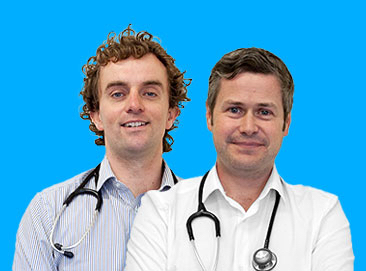In the March 2020 budget, the government announced the threshold income was rising to £200,000 and adjusted income to £240,000 along with some other changes. We will update this article very soon. Much of it remains relevant, taking into account the new limits. To be notified of the updated article join Medics’ Money here.
The NHS pensions crisis affecting hardworking NHS doctors has been well publicised recently. What is the annual allowance, tapered annual allowance and why are threshold income, adjusted income and scheme pays important for all doctors to understand? Not sure if you are likely to be affected or think you are safe because you earn <£110,000 per year? Medics’ Money asked specialist medical Independent Financial adviser Darren Scott-Guinness from Dental and Medical Financial Services to give us a summary.
The Annual Allowance (AA) is a contribution limit, based on your earnings and normally capped at £40,000, that allows you to put the maximum possible toward your pension while still receiving tax relief. This allowance applies across any pension scheme you may belong to and includes both individual and employer contributions.
The Annual Allowance has undergone a variety of changes throughout the years.
A decade ago, the AA peaked at £255,000, later dropping down to £40,000 in 2014 and is now subject to tapering as of 2016. The tapered annual allowance targets individuals with a threshold income (see definitions below) of over £110,000 and an adjusted income (all taxable income and pension savings minus certain tax reliefs) of over £150,000. This means that for every £2 over £150,000 an individual earns, their allowance is reduced by £1. Once earnings hit £210,000, the maximum reduction of £30,000 is imposed, leaving taxpayers with a maximum annual allowance set at just £10,000.
2019 marks the first that taxpayers including doctors are truly feeling the effects of tapering
Due to the three-year carry forward allowance, in some instances, taxpayers have been able to reduce their tax burden by using up their previously unused allowance. This reprieve is now over, which has been causing large tax bills for hard working doctors. The British Medical Association (BMA) estimates that nearly a third (30%) of consultants have been impacted by tapering over the last two years and predict that figure will rise to 100% of full and part-time consultants at some point during their career.
Join 30,000 doctors and receive free, exclusive, financial CPD for doctors in your inbox.
Medics’ Money is run by doctors and finance experts, for doctors. Our free financial CPD gives you all the knowledge you need to take control of your finances.

The BMA is trying to reduce the burden on medical professionals
Due to the high number of medical professionals being affected, it would appear tapering disproportionately targets high-earning doctors and the BMA has taken up the task of trying to negotiate with the government, urging a thorough review and overhaul of tax policies. Even though potential solutions have been tossed around – such as the 50:50 scheme (wherein a member pays contributions on half their pensionable pay resulting in half the ordinary accrual) – the BMA argues that the only true solution is to abolish the tapered annual allowance so that doctors can stop worrying about reduced pension allowances and hefty tax bills and focus on what really matters: their patients.
Working out your tax burden is complex
Adding to the confusion is the income floor instituted as part of the tapering legislation – threshold income(see definition below). If an individual’s income is less than £110,000, many believe they have escaped any additional tax penalties). Unfortunately, this is not the case and you may still receive an AA charge even if you are mindful of your contributions, because of pension growth. If you don’t receive a letter from the NHS Business Authority in October, you may think you are in the clear, but the NHS BSA is not privy to your total taxable income. So, since these letters are sent out after the tax year has ended, it’s impossible to work any tax saving magic and you will still be liable for any tax owed.
Really, it all boils down to the convoluted calculations that are used in the process. While it might be best to leave the determining to professionals, an understanding of the keywords used might be helpful. Find a Medics’ Money approved adviser here
Your guide to understanding Pension Annual Allowance
Threshold income refers to an individual’s NHS gross pay, plus any, and all taxable income: salary, bonus, pension income (including state pension), the taxable portion of redundancy and social security payments, trading profits, rental property and dividend income, bond gains, taxable payments from a purchased life annuity, interest from savings accounts and authorised unit trusts or open-ended investment companies, profit on bonds, income generated from alternative financial arrangements and any salary sacrifice arrangements after 9th July 2015. Take the total amount produced, subtract any allowable reliefs and taxable lump sum pension death benefits and there you have your threshold income. As you can see, it’s not as simple as it may seem as it can include such a vast amount of income from a variety of sources, so great care needs to be taken to ensure every pound earned is accounted for.
So simplified slightly;
Threshold income = Total gross income (from all sources) – your pension contributions (gross, ignoring any employer contributions) and other allowable reliefs – any taxed death lump sum benefits
If your threshold income is >£110,000 you may have a tapered annual allowance if your adjusted income is >£150,000.
Adjusted income takes it a step further and encompasses all employer pension contributions, designed to prevent individuals from exchanging salary for said contributions. The process involved in calculating adjusted income includes identifying the amount of income that a taxpayer is subject to pay income tax on, deducting any relief owed, adding the amount and value of pension contributions (pension input figure from your statement), and finally subtract any lump sum pension death benefits. Again, not as clear cut as HMRC leads you to believe as each step is involved and broken down into even more steps with even more instructions. If in any doubt you should take advice on this.
If your threshold income is >£110,000 and your adjusted income is >£150,000 then you will be subject to tapering of your annual allowance and for every £2 over £150,000 you will lose £1 of your annual allowance until you reach the maximum taper of £30,000 (Annual allowance £10,000) at £210,000
Reducing your tax burden: Restricting NHS income is, unfortunately, the only true course of action doctors can take to immediately avoid astronomical annual allowance charges. Apart from simply doing less work, there are other ways to reduce your taxable income including some charitable donations. It’s also important to claim any tax deductible expenses such as GMC/BMA/ Royal college fees etc as they can help you get under key thresholds. If you do private work you may need to consider the most tax efficient way to remunerate yourself. A specialist medical accountant is invaluable in this situation.
What medical school didn’t teach us about money
“What medical school didn’t teach us about money” will give doctors a step by step plan to transforming your financial future. Enter your details to download your copy now

How can any tax liabilities be paid?
NHS Scheme Pays: Scheme pays is essentially a loan secured against your pension savings with a rate equal to the Consumer Prices Index plus the scheme discount rate, currently hovering around 4.8%, making it higher than the standard mortgage rate. Electing to use scheme pays to pay your annual allowance charge will only reduce your pension pot. While it takes the burden off paying the allowance charge yourself and might be ideal for some individuals close to retirement age, BMA modelling predicts that some consultants might harbour a £1M loan if they continue to work and contribute to the scheme until state pension age. Some of the costs of scheme pays are outlined here
How do you know if you will be affected by the tapered annual allowance?
When facing the potential of a tapered annual allowance, the “wait and see” approach is not advised. As the calculations are intricate and tailored to an individual’s unique financial circumstances, doctors need to be proactive and take preventative action as soon as possible to avoid tax bills in the current tax year and develop a lasting plan to stay under the HMRC’s radar moving forward.
Potential 100% tax rate: Needing to account for all these extra sources of income outside of regular salary or earnings might mean that many consultants may be effectively facing a 100% tax rate. Already placed into the higher or additional rate tax brackets subject to 40-45% tax, tapering will add to this pressure as the tax-free personal allowance will also start to taper.
Effects of the tapered annual allowance: Due to significant taxation, many doctors have been forced to retire early, reduce NHS work, step down from leadership, research, and teaching positions, or generally take a step back from their careers. This not only affects the day-to-day lives of medical professionals, but it is ultimately the UK population that suffers from the lack of educated, experienced doctors available for treatment.
What should I do?
A starting point is to request your annual allowance pension statement each year from NHS Business Services authority. Their email is [email protected] or you can phone them – details here.
If comfortable, you might consider calculating your threshold income and adjusted income if applicable. However its extremely complex and if you think you may be affected we would always recommend consulting a specialist medical independent financial adviser.
This does not constitute advice and advice should be sought in all instances before acting on it. The Financial Conduct Authority does not regulate tax advice. Dental and Medical Financial Services is an appointed representative of Best Practice IFA Group Limited, which is authorised and regulated by the Financial Conduct Authority.








